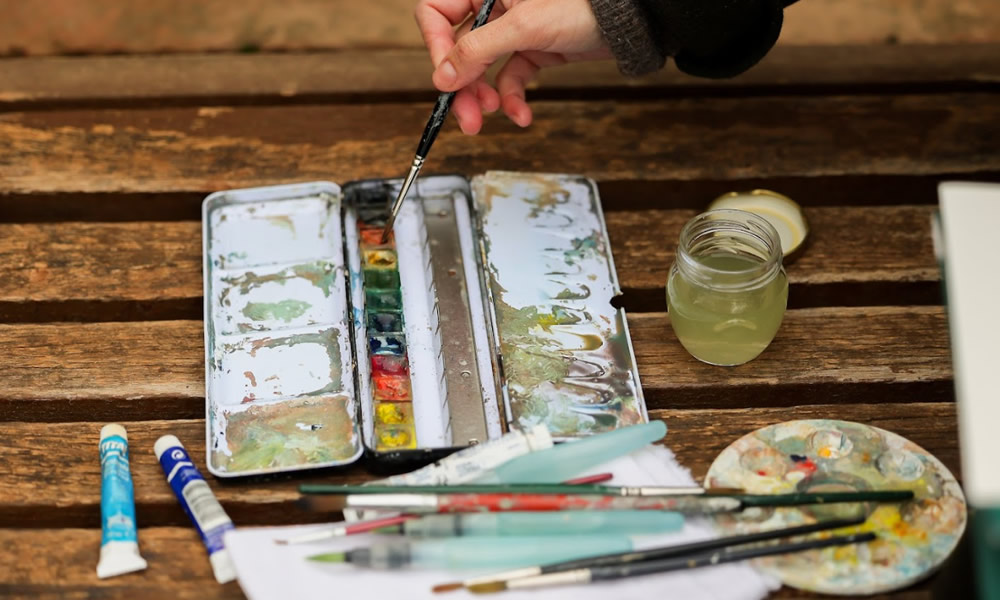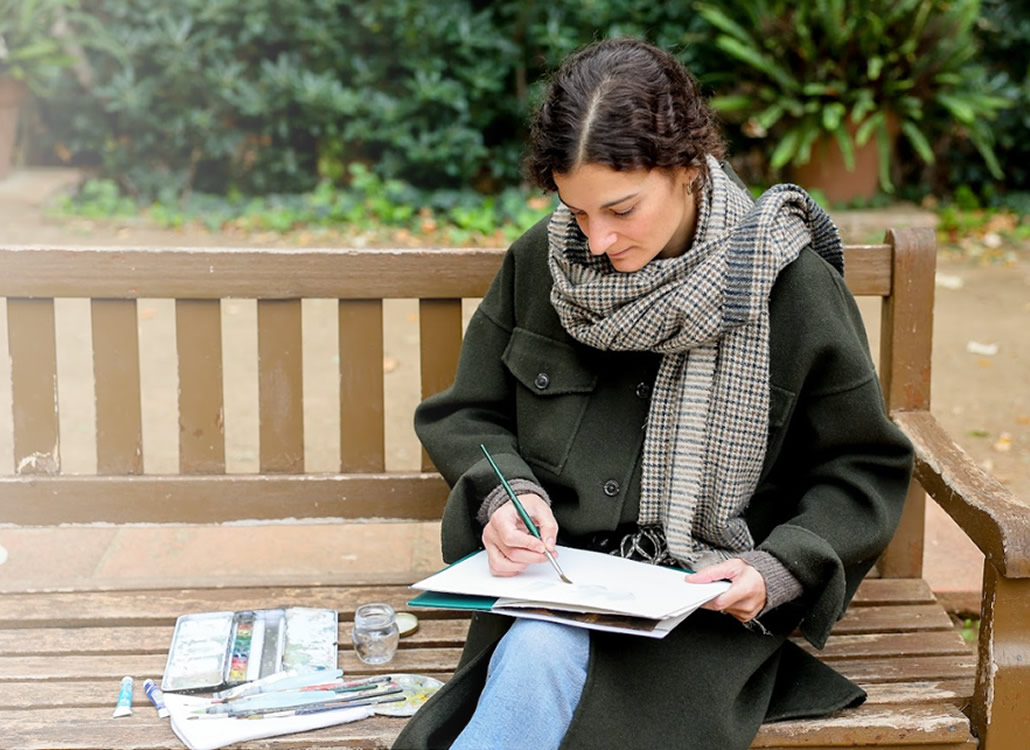Impars Project
Coordinator: Núria Garí
Interview
Text: Laura Andrès Tallardà and Irene Pérez Martínez
Photographs: Diana Segura
When did you start painting?
My first memories of painting are of being very young with my cousins and siblings during the summer. It was with them I also began to take photographs. My mother would let us use her camera and video camera, and we would spend hours inventing stories and filming them.
And when did you know that you wanted to become a painter?
Painting has been my passion since childhood, and now it is a dream come true. Once I discovered there was a degree in Fine Arts I decided immediately that I wanted to study that, and I wanted to get school over with as quickly as possible so I could begin.
It is your vocation.
Absolutely. Although when painting becomes your job, everything changes a little because there are deadlines and demands, but that doesn’t matter. When I paint, I forget the world. I could stand in front of the canvas painting outdoors, and suddenly I realise that the light has faded, I’m cold, and I haven’t eaten.
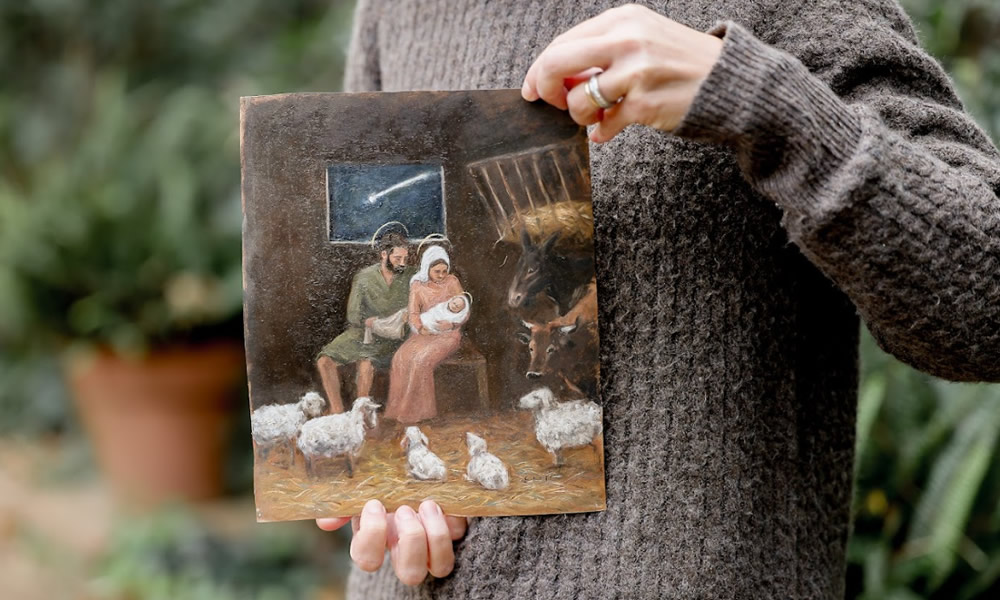
A blank canvas is a window to the imagination, but it can also be a challenge. How do you find inspiration?
I always work in reverse: I see an image that attracts me and I look for a canvas to paint it. I have a collection of images that aesthetically fascinate me for whatever reason on the drawing board that I would like to paint someday.
Salvador Dalí said that “a painting is a handmade photograph.” Your universes are both painting and photography. To what extent do these universes feed each other?
Photography and painting are my channels of communication. I use them to evoke the beauty I see when looking at a particular scene. Sometimes, when I do not have paintings or enough time to paint, I take photos, but the underlying aesthetic is the same.
India, England, Italy, Portugal, Morocco and the Netherlands make up your photography portfolio. How have those trips helped build your photographic vision?
I am always at my most attentive when in an environment that is new to me. While travelling, the contrast of cultures makes it easier for me to be observant and in constant awe of the beauty. This vision remains and imbues everyday life.
Nature is very present in your work.
It is a great teacher and a source of inspiration. When I paint, I try to decipher and capture the essential architecture of lights and shadows, shades of colours, contrasts and environments found in nature.
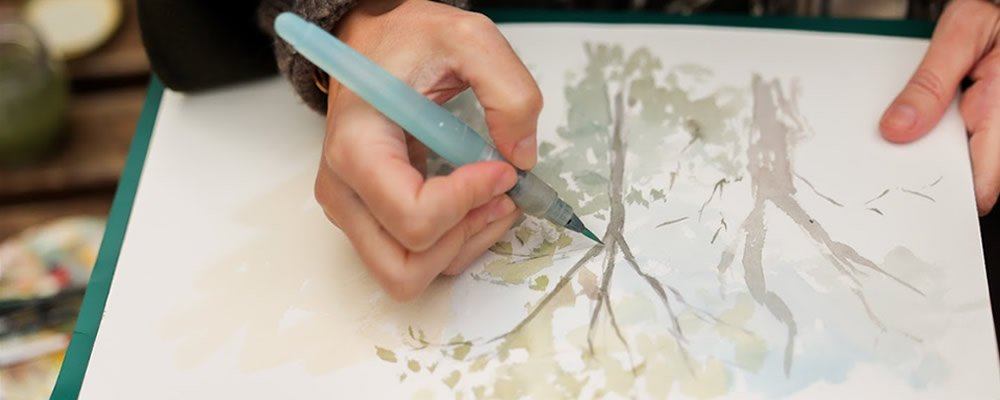
You have recently begun to paint at weddings, capturing the essence of pre-dinner drinks. How do you capture the sensations of the celebration in painting?
I seek to capture what I find most significant about the celebration, as if I had to summarise it. I intuitively look for what resonates with me and engage mentally and emotionally in the scene to represent it. As I paint I am an observer, but I am also part of the scene.
You are a painting teacher at UIC Barcelona and in other schools. What do you learn from your students?
I learn a lot. Each one has a unique sensitivity and way of seeing things. It is lovely to see very different interpretations with a particular style and colour palette coming from the same model. I learn other ways of understanding the world from them like how to be surprised and how to observe little details. I also learn more practical aspects such as how to decide when to finish a work or how to solve obstacles that may arise when painting.
UIC Barcelona has a Nativity Art collection, and a new piece is added to it every year. This year, you are the artist chosen to create the Nativity painting. What did you base your proposal on?
On gospel scriptures, other representations of the nativity in art history and on the images of mangers that I have seen all my life.
The sheep in the picture have a special meaning to me: when we were little each member of the family was represented by a sheep in the manger we had at home. If we had behaved, we were allowed to move the sheep a little step each day from the distant desert to the door of the manger. The idea was to arrive in time to be worshipping baby Jesus on 25 December.

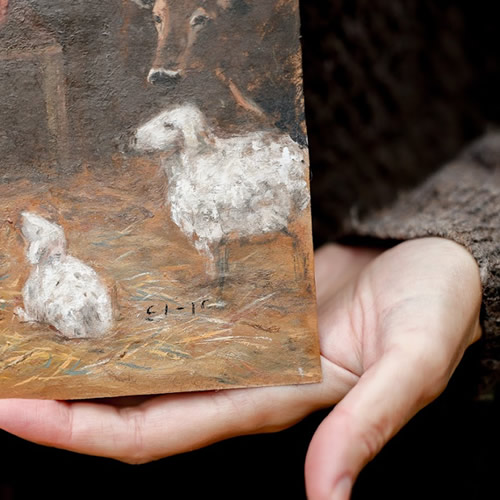
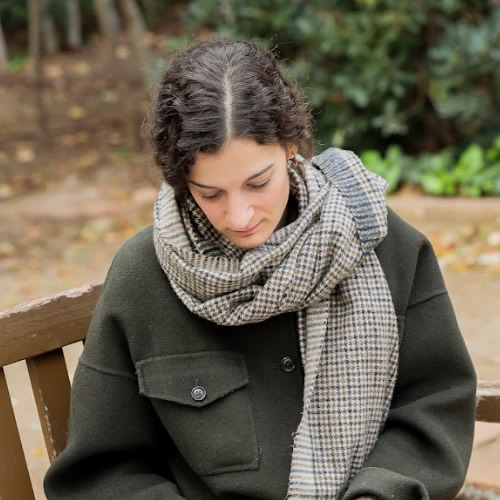
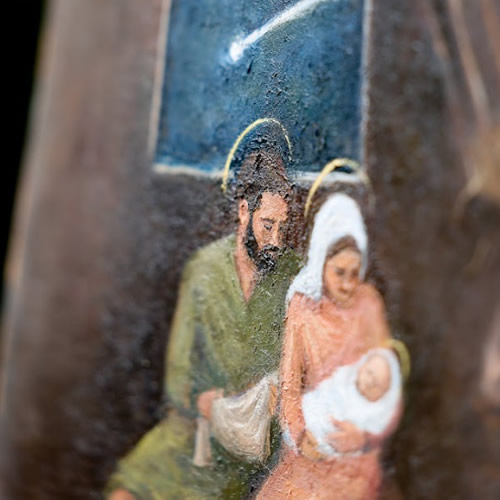
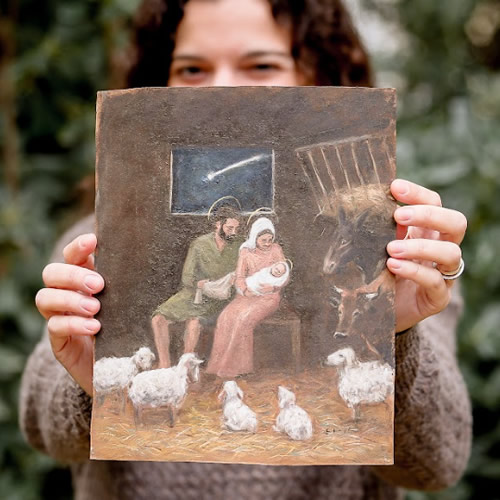
What techniques do you use when creating your artwork?
For the illustrations I use watercolour, gouache, charcoal, graphite or India ink. For the paintings, oil painting on canvas, wood or paper. Lately I have also been exploring digital techniques to combine them with traditional ones.
What artistic projects do you have in your hands for the future?
I have many. One that I’m most excited about is a series of portraits of artists working in their workshops for a collective exhibition. I have already painted two, and I love the experience of getting to know the creative process of artists that I admire.
If you had to define yourself as an artist with only five words, what would they be?
I find it hard to define myself as an artist because my style is always evolving. When I try to describe it, I worry about limiting myself in the future. However, ‘curious’, ‘multidisciplinary’ and ‘contemplative’ are some terms with which I would identify myself as an artist up to now.
